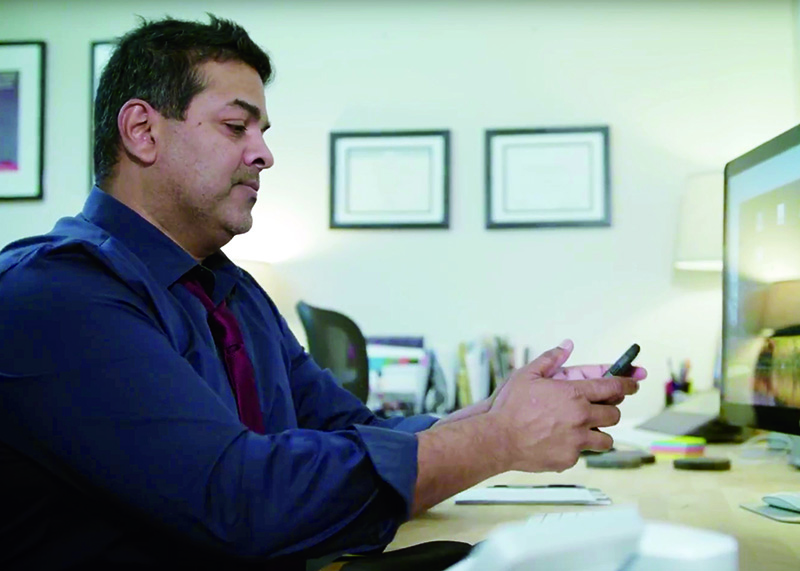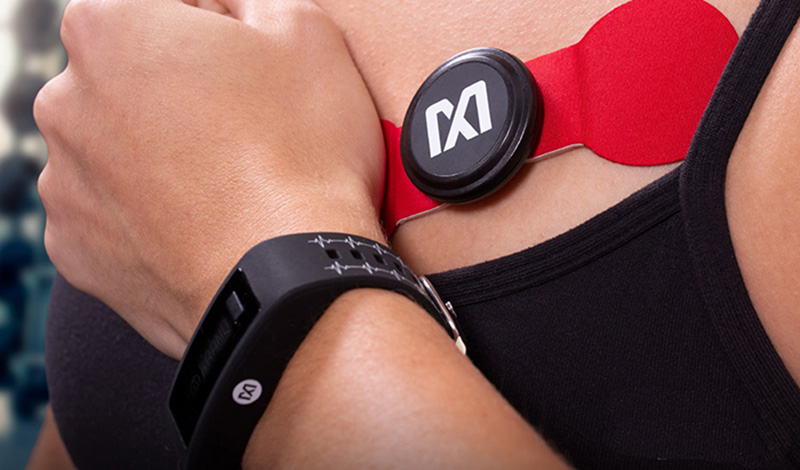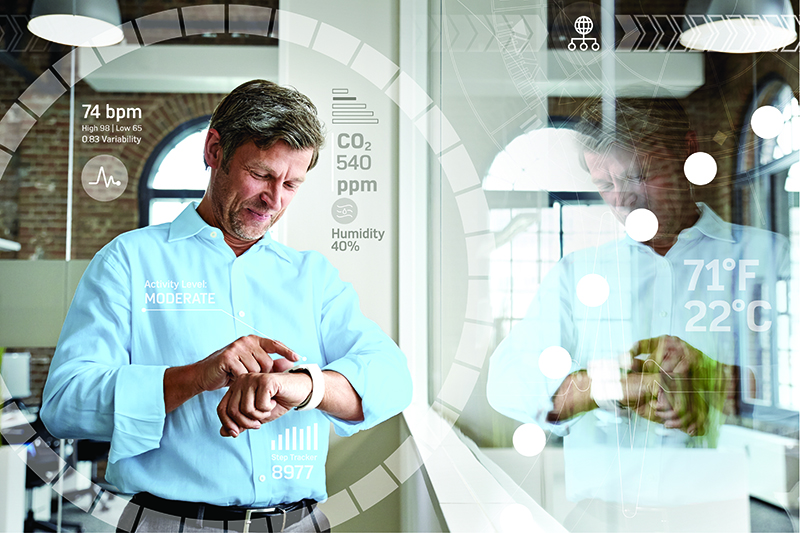A health check for the electronics industry
As medical devices become smaller and more connected, Steve Rogerson looks at how the electronics industry is coping. Worldwide, the health industry is in the middle of a revolution that is seeing more and more people take control of their own well-being. Hospitals stretched beyond capacity are welcoming the move to patients being cared for in their own homes using remote monitoring equipment. Consumers are buying wearable devices that can measure activity and heart rhythm.
Achieving this would not be possible without the technical innovations in the electronics and software industries in recent years, as well as the growth in connectivity that allows even small sensors and devices to become part of the wider Internet of Things (IoT).
The equipment is becoming smarter, more connected, and of course smaller. Take insulin pumps, which once could best be described as luggable but are now truly portable and can even be bodily worn.
“Medical devices are becoming more wearable,” said Steve Dean, Senior Manager at ON Semiconductor. “The most noticeable example is in glucose monitoring and insulin delivery. They are moving to a wearable device that monitors glucose levels and delivers insulin when needed. It is effectively a bodily worn artificial pancreas.”
This is a trend that is pushing healthcare closer to the consumer.
“There are things going on like telehealth with companies employing artificial intelligence to do a first level diagnosis of a condition,” said Andrew Baker, Executive Director at Maxim Integrated. “This is helpful in countries were there is no easy access to medical care.”
Consumer products
On the other side, consumers are becoming more aware of their own wellness and are opting to buy products that can monitor their heartbeat, activity and other health indicators.
“Consumers are concerned about their overall health and are being empowered by these devices,” said Baker. “There is a concern that these devices are creating hypochondriacs but some of these devices are real clinical grade tools.”
This is leading to a convergence of consumer devices with medically approved wearables, and bodies such as the FDA in the US are watching this very closely. However, achieving approval from the FDA and similar bodies in other countries is an onerous and costly task. This means that though some of these devices are clinically accurate, the manufacturer cannot claim so.
“There is a convergence of professional health and consumer health,” said Shalini Palmer, Senior Director for Healthcare at Analog Devices. “People are looking at fitness but it will go beyond that with people managing illnesses at home. We are seeing people getting involved in proactive control of their healthcare.”
David Smolinski, Manager of Healthcare Markets at Renesas, agreed that some of the fitness devices were getting better but said that many of these companies did not want to go down the route of becoming approved medical devices because of the time and cost involved.
“But doctors do look at this data from fitness devices to see trends,” he said. “They can get some idea of what is happening. For some applications, these are at medical device level.”
 Above: Leman Micro Devices can turn a smartphone into a blood pressure monitor
Above: Leman Micro Devices can turn a smartphone into a blood pressure monitor
One company that believes it may have the answer to this is Leman Micro Devices. It is developing a sensor and monitoring product that it is planning to put through the various medical approval processes this year and early next year. This product could then be built into a smartphone for less than the cost of the camera and thus mean the smartphone could act as a medically approved device at virtually no extra cost to the user.
Chris Elliott, Co-founder of the company, said that all the major phone manufacturers had been in touch and were interested in the product.
The key feature that is not found on other consumer medical devices is its ability to take blood pressure readings.
“There is no other phone sized device that will measure blood pressure with clinical accuracy,” said Elliott.
The user puts their finger onto the sensor and follows on-screen instructions to press harder until it reaches the point where it stops the pulse. From this, the blood pressure can be calculated.
The device is already undergoing clinical trials in a hospital in Switzerland and safety tests by an independent laboratory are planned. The goal is to get it approved and be available as part of a smartphone some time during 2019.
Knowledge
One of the main challenges facing the semiconductor industry is the breadth of knowhow that is required, from both IP and technology standpoints. Manufacturers have to develop measurement systems that can operate in noisy wireless environments. Drug delivery mechanisms have to be extremely accurate. The software has to be reliable. RF expertise is needed. And this all has to be carried out in small and power efficient packages.
Some companies are taking techniques they have learned in other fields and bringing them into the medical world. Energy harvesting is a good example.
 Above: Maxim has developed a patch for taking ECG measurements
Above: Maxim has developed a patch for taking ECG measurements
“We have a smart lighting application that uses an energy harvesting switch,” said Dean. “So we are working with these energy harvesting techniques for medical applications. Our products can work with energy that can be harvested from the human body. You can harvest energy from body temperature and motion. They are investigating harvesting energy from a beating heart. That is super cool.”
Wireless expertise is something that medical device makers have not really had to worry about until recently. Some have looked at just attaching an approved wireless module to an existing device and hoping for the best. However, the best is often not good enough in this case and some are turning to electronics companies for help.
“They need a new set of skills they haven’t had before,” said Smolinski. “They have not been exposed to this. Certification is not finished by a certified module soldered onto the board. They have to certify the final product.”
Once the module is in a new housing and different environmental conditions, it may not perform in the same way as it did when it was a stand alone unit.
Security
As these devices become more connected, security raises its head, both in protecting data and stopping devices being hacked.
“There is no one global standard for security for medical devices,” said Smolinski. “There is some activity down that route but for now manufacturers have to meet different security regulations.”
Security even effects components such as power supplies as these are now digitally connected to the equipment.
“As soon as you open up digital communications to the power supply, you open up a security issue,” said Jeff Schnabel, Vice President of Marketing at CUI. “You don’t want people to access the medical device through the power supply.”
CUI is hoping to bring the knowledge it has learned developing secure power supplies for data centres into the medical arena.
 Below: Consumer wearables are getting more sophisticated (Picture: Analog Devices)
Below: Consumer wearables are getting more sophisticated (Picture: Analog Devices)
“But there are no defined standards on this and we are only just starting to understand that this could become an issue down the road,” he said. “There is no definition of where the barrier for security takes place, and this is what we are looking at.”
Eventually, he said, there would be actual standards and requirements in place and he believes these will come down from the device manufacturers themselves.
There is also an issue with supply chain security, especially in an age when the US is implementing more tariffs. With medical devices, reliability is a big issue so the danger of counterfeit components is a concern.
“Tariff barriers will make that worse as people try to bypass them,” said Schnabel.
Miniaturisation
The electronics industry is also faced with the task of making what was once bulky medical equipment into something far, far smaller. Take for example an ECG machine. These are normally large pieces of equipment that are plugged into the wall with multiple cables attached to patches on the patient’s body. There are versions in harnesses that can be worn by patients but these too are large and have short battery lives.
“Where we come in,” said Baker, “is to enable the miniaturisation of the equipment with lower poser consumption.”
This has led to Maxim being involved in the design of a single patch that a patient can wear for up to two weeks, even in the shower. This is obviously only taking measurements from one place, but it is good enough to deliver a first level diagnosis and trigger an alert if something is going wrong.
The trend for miniaturisation goes right down to the sensor level and this also has to be done at low cost, to the point where they can be used once and thrown away.
“It takes a lot of effort to set products up, to clean them and maintain them,” said Palmer. “This is leading to more disposable products. It means it is cheaper to dispose of them and use a new one than to maintain and clean a used one.”
Conclusion
Medical devices are becoming smaller and more connected as care moves from hospitals to homes and the patients themselves. People are taking more control of monitoring their health. The electronics industry is responding by developing devices that meet these new needs and offering expertise in areas such as communications where traditional medical companies have little knowledge.










